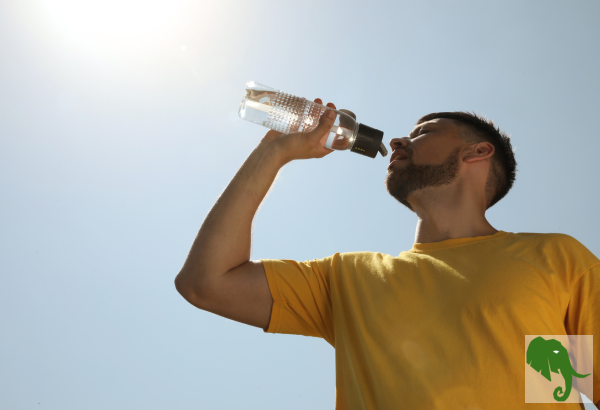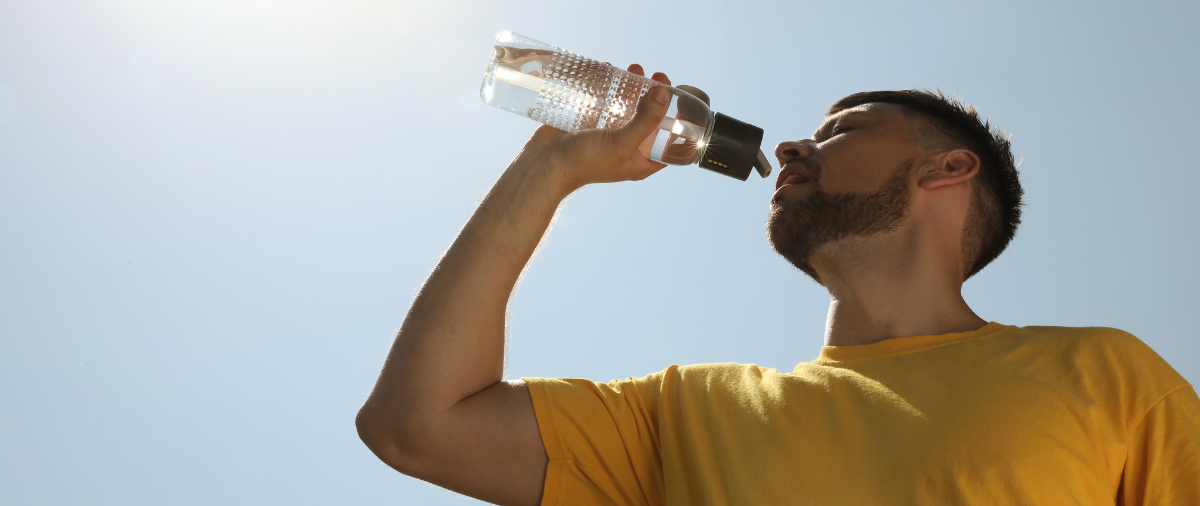
As we progress through the summer months, many regions worldwide, including the United States, are experiencing record heat temperatures. Despite the heat, many of us find ourselves outside, whether for work, pleasure, or simply to enjoy the sun. While this is great, it’s crucial to pay attention to our bodies and stay hydrated, even if we don’t feel thirsty. Recognizing the signs of heat illness is essential to prevent severe health issues. Although there are many types of heat illnesses, such as heat syncope, rhabdomyolysis, sunburn, and heat rash, we’ll focus on the three most common and concerning: heat stroke, heat exhaustion, and heat cramps. We’ll discuss their symptoms, treatment, and prevention. We take you through several things you can do to stay safe in the heat.
In my previous post on Elderly Safety, I enjoyed sharing my personal experiences, so I figured I’d try it again. During my time in the Marine Corps, I lived in various environments and conditions. I’ve suffered from hyperthermia during cold weather training in Norway and experienced heat exhaustion and heat cramps during desert training. None of these were pleasant experiences, and despite my training, I often overlooked the symptoms. Awareness of your physical state is the first step in prevention. Also, keep an eye on your loved ones, especially children, who are particularly vulnerable to heat illness during the summer.
Let’s discuss these conditions in order of severity, from mild to life-threatening.
Heat Cramps
Heat cramps are the mildest form of heat illness, consisting of muscle cramping or spasms caused by intense exercise or sweating in hot weather. Let’s not get into the semantics of intense exercise—these days, walking to the cooler to get a beer out on the patio is intense for me. You know your body. Even if you consider yourself healthy and in shape, you need to be aware of heat cramp symptoms such as cramping or spasms in the stomach, legs, or arms, along with heavy sweating and extreme thirst. Your body is telling you something is wrong.
Children having fun and playing in the heat, even while in water, may ignore the symptoms of heat cramps. Athletes, even with supervision and frequent hydration from coaches and staff, can experience symptoms. I know I ignored the symptoms many times. If you don’t recognize that you are experiencing heat cramps and treat them accordingly, it can lead to heat exhaustion or, worse, heat stroke. You need to stop what you are doing, move to a cool place, and sip water or a sports drink. It also helps to massage the area where you are cramping. If the cramps last longer than an hour, you should seek medical attention.
Heat Exhaustion
Heat Exhaustion is typically caused when the body loses too much water and salt through excessive sweating as it tries to cool itself. It is often the next stage after untreated heat cramps. Since heat cramps can be a precursor to heat exhaustion, their symptoms may also be present, along with additional symptoms such as nausea, vomiting, headache, dizziness, low blood pressure, fainting, weakness, and cold, pale, clammy skin. To treat heat exhaustion, stop what you are doing, move to a cool place, and sip water or a sports drink. Loosen your clothing, place cool, wet clothes on your body, and if possible, take a cool bath or shower. Seek an air-conditioned area or use a cooler of ice water if necessary. During one of my experiences with heat exhaustion, I recall feeling weak, but I don’t remember fainting. I do remember being submerged into a tub of very cold water with my khakis on. Boy, was I mad when I gained consciousness.
Heat Stroke
Heat stroke is the most severe type of heat illness and requires immediate medical attention. I have been very fortunate not to have experienced heat stroke. Fortunately, I was able to be treated for the lesser illnesses before they escalated. Heat stroke occurs when the body can no longer cool itself, and sweating is no longer effective. The body temperature can quickly rise to 106°F within 15 minutes. A temperature over 103°F can be very dangerous and can cause permanent damage. CALL 911 immediately if you suspect someone is experiencing heat stroke.
Symptoms of heat stroke include a pounding headache, nausea, dizziness, hot, red, dry or damp skin, rapid pulse, and loss of consciousness. Upon calling 911, quickly move the person out of the heat, remove unnecessary clothing such as shoes, socks, and hats, and cool their body by placing ice under the armpits, on the neck, and groin. Use a cloth to prevent ice burns. In short, do everything possible to cool the body without causing further harm. The significant difference between heat exhaustion and heat stroke is the mental status of the person, including confusion, unconsciousness, and possible combativeness, along with a rapid spike in body temperature.
Prevention Tips
Enjoying summer activities like barbecues or poolside lounging often involves alcohol, which can impair the body’s ability to cool itself and cause dehydration. Mai Tai anyone! Drink plenty of water when consuming alcohol, especially in the heat.
If you exercise outdoors, try to do so in the morning or move indoors on particularly hot days. Wear light, breathable clothing and use sunscreen to protect against sunburn, which can affect the body’s ability to stay cool. If you are just out and about, breathable long sleeves or long pants can help protect against the sun. And yes, dark skin can get sunburn.
If you have a sudden change in environment, such as travel, allow yourself to acclimate to the heat before engaging in strenuous activities.
Certain physical and health factors can increase susceptibility to heat illnesses, including certain medications, obesity, heart disease, and poor circulation.
While we often associate heat illness with outdoor activities, it’s important to be aware that symptoms can also occur indoors if the environment is hot, humid, and muggy.
One of the reasons I experienced heat illness more than once is because once you’ve had heat exhaustion or heat stroke, you’re more susceptible to it in the future.
Frequent hydration is crucial, but the best prevention is being aware of your body’s signals in hot environments. Now that you’re familiar with the symptoms, take immediate action if you experience them.
Conclusion
Heat illnesses are serious and can escalate quickly if not recognized and treated promptly. Understanding the symptoms and knowing how to respond can make a critical difference in preventing severe health issues. Whether you’re enjoying a summer barbecue, exercising outdoors, or simply spending time in the sun, it’s essential to stay hydrated and pay attention to your body. Educate yourself and those around you about the signs of heat cramps, heat exhaustion, and heat stroke. By taking preventative measures and acting quickly when symptoms arise, you can ensure a safe and enjoyable summer for yourself and your loved ones.
Note: Our pets need to be kept in mind. Dogs and cats cannot cool themselves as we do and can suffer the same illnesses, especially heat stroke. Never leave your pet in a parked car, even with the windows open or cracked. While outdoors, try to keep them out of the sun and heat by finding a cool, shaded area whenever possible. Provide them with water frequently and avoid walking them on hot pavement. Be watchful for symptoms of heat illness when you have them out in the heat.
Quick Reference Guide
Heat Cramps
- Symptoms:
- Muscle cramping or spasms (stomach, legs, arms)
- Heavy sweating
- Extreme thirst
- Treatment:
- Stop activity
- Move to a cool place
- Sip water or a sports drink
- Massage affected area
- Seek medical attention if cramps last longer than an hour
Heat Exhaustion
- Symptoms:
- Nausea and vomiting
- Headache
- Dizziness
- Low blood pressure
- Fainting
- Weakness
- Cold, pale, clammy skin
- Treatment:
- Stop activity
- Move to a cool place
- Sip water or a sports drink
- Loosen clothing
- Place cool, wet clothes on body
- Take a cool bath or shower
- Seek air-conditioned environment
Heat Stroke
- Symptoms:
- Pounding headache
- Nausea and dizziness
- Hot, red, dry or damp skin
- Rapid pulse
- Loss of consciousness
- Confusion, combativeness
- Body temperature over 103°F
- Treatment:
- CALL 911 immediately
- Move to a cool place
- Remove unnecessary clothing
- Cool the body with ice packs (armpits, neck, groin)
- Use a cloth to prevent ice burn
Related Content

Read other OwnGuard Solutions blog posts
Read our other posts centered around being safer and better prepared.


Denis, I appreciate the post regarding heat exposure effects. I hate to drink water. I get to working and don’t stop to drink water. I had a bad case of heat exhaustion and suffered fatigue, dizziness and, light headedness.
I appreciate your service and your public service.
Thanks, Jim